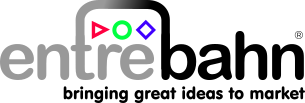How to Create an Effective Curriculum Vitae (CV) that Gets Results
 |
IntroductionTo be effective, you CV must meet the criteria stated in the position posting and be attractive and easy to read. It should also included all the expected material, such as education and work experience. |
CV and Resumé Differences
In North America, CVs are used to qualify for academic or research positions emphasizing academic achievements and advances or inventions. On the other hand, resumés are used for business purposes and emphasis the value in dollars and market success of your past experience. Only minimum academic background is needed in a resumé. For a resumé, just list the degree(s) you obtained and the schools or universities you attended.
In the rest of the world, CVs are used for both academic and business purposes.
Appearance/Format
The appearance is the first thing a person sees and it affects their view of you and their desire to read further. So, your CV should be:
- Logically organized
- Well written using short, powerful words, short phrases, and correct grammar
- Written in the active voice
- Have distinctive headings
- Use white space to avoid making your CV look cluttered
If you expect your CV will be read by a person, keep it short: 1-3 pages before adding your list of publications, papers, or the courses you have taken. This may mean you have to omit a great deal. Also, it is suggested that you omit experiences more than 10-15 years old. The reader will assume that this experience has contributed to your current skill set. Besides, technology that old may not be relevant today and it adds unnecessary length to your CV.
Also, if you are printing your CV, ensure that your name appears at the top of each page and each page is numbered, including the number of pages in your CV. That is, each page should include something like "Page 3 of 4" in the header or footer.
If you are sending your CV to a large company, they are probably using an automated CV scanner. In this case, the length of your CV may not matter.
Avoid contractions (e.g. don't), slang (e.g. "perfect", "man"), trite phrases (e.g. "got", "lots of", "huge"); and overuse of the pronoun 'I'.
Check your CV for spelling and grammatical errors before sending it out for review or sending it to your prospective employer. You may also want to check how difficult it is to read by using a "readability index" program. However, scientific vocabulary may make readability irrelevant.
Context/Background for a CV
If you are sending your CV out for review, an advisor can give you more specific advice if you provided a context for your CV. Typically, the context is the type of ad to which you are responding. If you don't have a specific ad, then a list of your goals can serve as a context. In this latter case, your CV will be critiqued based on what you say you want.
Content Criteria
Anyone reading your CV will have an overall subjective opinion of you and your CV. In a EntreBahn review, the advisor will give an opinion using an "overall comment". It subjectively tells you how well your CV fulfills its task of getting you an interview.
There are also a series of more objective criteria that are used to measure the effectiveness of your CV. Things that are considered include:
- Relevance: your CV reflects the position being offered.
- Completeness: your CV has all the needed sections filled in appropriately.
- Organization: your CV is ogically organized in a manner appropriate for the type of position.
- Readability: your CV is easy to read and understandable.
- Well qualified: your CV sets the right tone for the position. It neither over nor under qualifies you.
- Research: your CV shows some indication that you have researched your potential employer.
In a EntreBahn review, there are more specific objective review criteria that are also measured.
CV Organization
Each CV should have the following sections, preferrably in this order:
- Skill Set: What are your main skills that you bring to the position. Keep it short. For example, "Dynamic leadership, labour negotiator, successful salesperson, multi-lingual.
- Chronological Experience: from most recent to oldest, on one line, who you worked for, what position you held, and when you held it. Next, list what you did while in that position in terms of accomplishments that were of benefits to your employer. This is not a list of responsibilities. For example, "Reduced overhead 30% by improving workflow", or "Increased sales by 135% while increasing the sales force 10%", or "Completed assignments on time and under budget 83% of the time". Quantify your accomplishments with numbers, if possible.
- Networking: what networks, both person-to-person and electronic, do you belong to. In particular, are you an "influencer" of those around you.
- Education: Highest degree to lowest with school attended for each, if different.
- Extra Curricular Activities: Community services you have done. Professional associations in which you participate and the offices you held. Athletics in which you participate. Hobbies you indulge in, if you think they will help. For example, you are involved in local politics, you play or coach soccer, you used to be a tennis pro, you like camping out.
- Publications, Papers, Awards, Presentations: this section is essential if you are seeking an academic or research position. Include where to find these publications, papers, presentations and evidence of awards.
Many recruiters ignore the Objective section because it is often about what you want, not what they need. Also, many people use this section to say that they are "self-starter", "hard worker", "team player", "success oriented", etc. Of course, any applicant is all of these things. Would you put down that you are "lazy follower, loner, and looking to fail"? So these positive attributes go without saying and are often a waste of a recruiter's time, something that you do not want to do.
Many of us have "gaps" in our employment history. So this is not unusual. However, you will need to demonstrate that you used these breaks to do something that would be of benefit to your potential employer. For example, if you stayed at home to raise the kids, then you learned to multi-task, deal with difficult situations, learned patience and generally succeeded in bringing up kids who are motivated and independent. If you were laid off from a job, then explain that you used your time to take relevant courses to upgrade your skills and stay current. You also became more active in your community and caught up on the current trends in social media and the Internet. Discuss any accomplishments and recognition that you received during these gaps. While all these explanations are possible, only use them if they are true.
New Developments in CVs
Networking
The classic way is the written CV, which we cover here. It is always the starting point. If your cover letter and CV cause the recruiter to want to know more, you can support your application by:
- Submitting relevant publications.
- Creating a video of yourself to give the recruiter a better idea of who you are.
- Having business networking links, especially to sites like LinkedIn, etc.
- Having social networking links like Facebook, MySpace, etc.
Scannable
Large, well-known companies may get hundreds, if not thousands, of resumés a month. They use resumé-scanning software to go through all these submissions. There are two main things to keep in mind about making your resumé scannable:
- The format of a resumé should be simple, clear and somewhat standardized. Avoid things such as fancy fonts, italics, underlining, embedded graphics, and most things that are not textual in nature.
- Scanning software looks for keywords in your resumé. These keywords take 2 forms:
- General category keywords such as chemist/chemistry, programmer/programming, sales/account executive, video/movie producer, etc.
- Specific keywords such as bioluminescence , C++/Java, medical devices, documentary, etc.
These keywords should be used in context so the resumé reads as a coherent document. Typically, there should be one or more specific keywords for each general keyword. Use of general and specific keywords back each other up and make you more real.
Historically, there used to be a section called "Keywords". It is no longer needed and only clutters up your resumé. This section is often ignored since it is too easy to "pack" irrelevant words into this section.
Legal issues
In North America, the resumé should not mention age, race, gender, disabilities, family status, or anything else not relevant to your fulfilling the employer's needs. For example, your date of birth, or the date of your graduation need not be given. For this reason also, you may choose not to include a photo or video. In some cases, you may need to mention one of these attributes. For example, applying for the government's small business loans to minorities may require that you mention your race to qualify.
Conclusion
Always have a covering letter for your CV. It informally introduces you to the reader. It also tests your ability to compose a coherent letter. The written word is still a major way of communicating complex ideas and issues.
Also, most of us have a generic CV that we use with a cover letter tailored to the specific position. This works as long as all the positions that you are applying for have the same requirements. If this is not the case, it would be wise to keep a generic CV template and then tailor the CV to the specific position you are after.
This guideline covers all the major points for CVs. However, there are other resumé templates that cover more specific needs like creating:
- Chronological Resumés — used when you have a continuous employment history
- Functional Resumés — used when you have breaks in your employment history; or you want to emphasis your skill set and experience regardless of when this occurred
- Curriculum Vitae (CVs) — usually used when academic qualifications and history of published works are important for the type of placement you are seeking. There is no hard and fast rule separating CVs and Resumés. There is also a cultural difference between North America and the rest of the world. In North America, Resumés are used. In the rest of the world, CVs are used.
- Student Resumés — used when you have limited or no work history in business.
Lastly, each person reading your CV will have a different opinion of whether it is "good" or not. Objectively, it is "good' if it gets you interviews. Our advisors will try to give you as much objective feedback on different aspects of your CV as they can, but you are the final arbitrator on whether to follow their advice.
Also, the type of experience differs between resumé and CVs. Resumés should emphasis the benefit that the client brought to past employers in terms of sales and savings. CVs emphasis academic achievements, patents, papers, honours, and collaborations.
